Burial of the Sardine in Murcia
Murcia, a city in South Eastern Spain celebrates the end of Lent with a huge fiesta. The burial of the Sardine. Last April I was invited to attend this colourful event. Part of the Spring Fiestas in Murcia or Fiestas de Primavera. It was actually my first visit to Murcia. Especially thrilled to get to know another corner of Spain I´d not already visited.
The main event of these celebration is called El Entierro de la Sardina. In English that´s The Burial of the Sardine.
So what is this all about?
Let´s find out
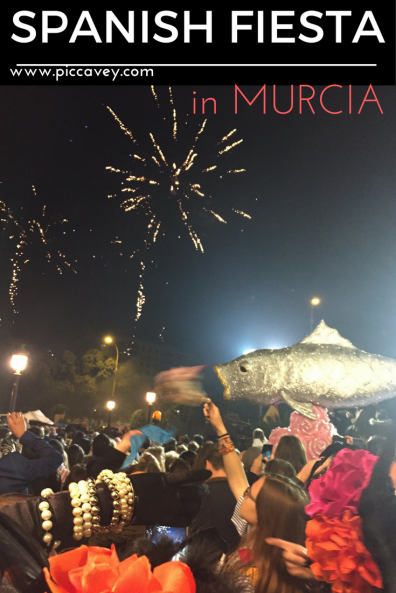
El Entierro de la Sardina
The “Entierro de la Sardina” is a tradition which ends Carnival in different locations around of Spain. Barcelona, Ibiza, Fuentesnuevas in Leon or Las Palmas de Gran Canaria all celebrate this in some way.
Undeniably the origin of all these festivals are date back centuries. When masks were used in carnival style celebrations across the world.
Origin of the fiesta
This particular event in Murcia stands out from similar celebrations as other locations celebrate this on Ash Wednesday. In Murcia the celebration is the weekend following Easter. Dating back to 1850, that first year local students made up a small parade to celebrate the end of fasting at lent. The sardine figure was included as the students were tired of eating sardines.
This festival caught the imagination of the Murcian people, traditionally meat isn´t eaten at Eastertime so it was a good enough reason to celebrate. The fasting over Easter had passed and they could eat meat again and leave the solemn holy week behind. The tradition grew more and more popular over the years and into what it is today. A huge street party and now its a festival which has been declared of International Touristic Interest.

What is the Burial of the Sardine?
So what happens when you visit Murcia to experience this fiesta. There are three different parades through the city centre. On Friday night celebrations begin with the Testamento de la Sardina.
This first parade is to announce the Sardine that it will be burned tomorrow. Almost like reading the last rites ahead of the cremation and huge bonfire which happens at midnight on Saturday.
This colourful parade has marching band, dancers, acrobats, flag bearers, and all the people involved in the celebration (see glossary below) Of course the sardine has it´s own float closing the parade.
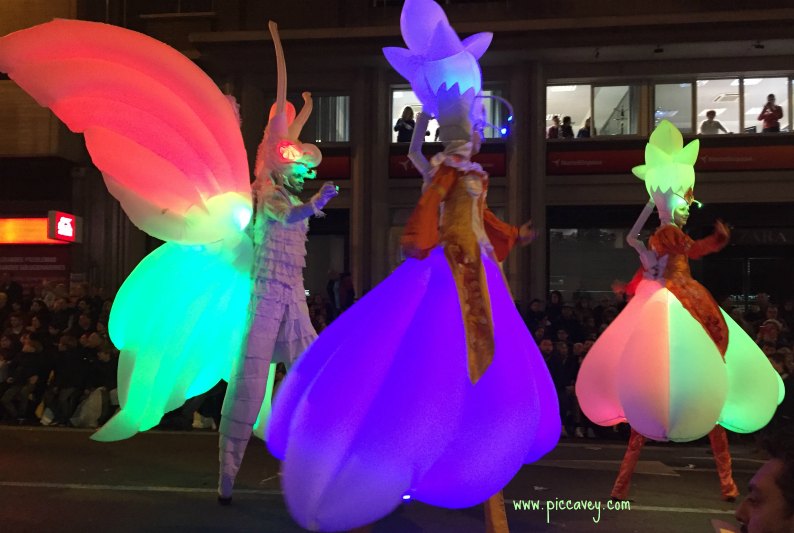
Spanish Festival
On the big day which is Saturday there is a parade in the daytime leaving the city centre and moving up to the Plaza Circular. Finally some loud rockets are set off (no Spanish festival is complete without these).
Small toys and whistles are handed to children lining the streets by the Sardineros. There are also lots of marching bands around the city during the morning and afternoon to liven up the crowds between the parades.
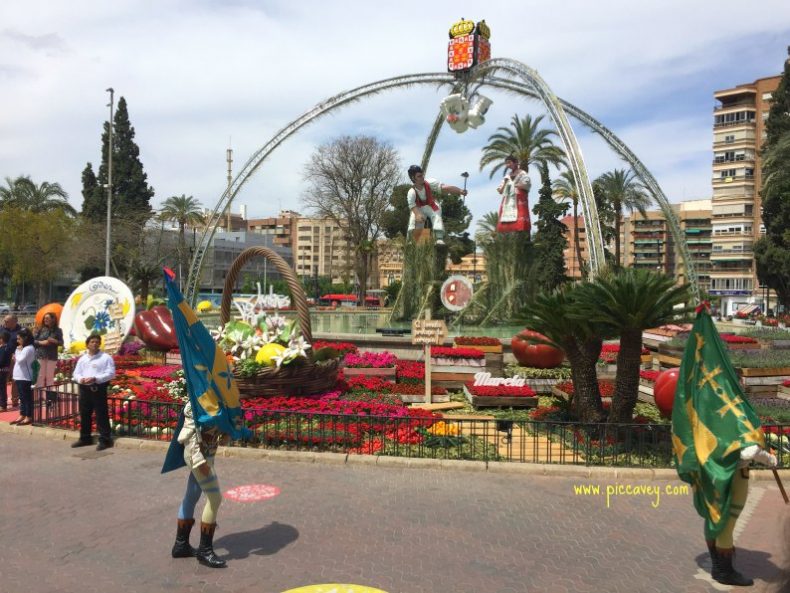
Street Parade
On Saturday night the main cavalcade is huge. Beginning at 9pm the festivities last until past 2am. This long procession has three parts.
- The first part is mainly advertising. Leaflets are handed out from local businesses. This gives you time to find a good spot to see the parade.
- The second part features stilt walkers and street artists. Marching bands and fun creatures parade through the crowds. Along with dancers, acrobats and flag bearers.
- The third part of the procession is what everyone is waiting for. Around 30 huge carnival floats laden with toys and gifts for the crowds. Footballs, teddy bears, sweets, small toys and other items. The floats are themed by the Gods of Olympus.
The entire fiesta is accompanied by the sound of whistles. Because on the first day of the festival some of the sardineros give out whistles. Some people even take their own. The whistle is heard constantly during the festivities. Along with the music from the marching bands and the bangs from the rockets. Certainly its not a festival for those who don´t like noise.

Glossary – Burial of the Sardine
Sardineros – The organisers of the whole event. Each one belongs to one of the Sardinero groups and a float or carnival lorry. They wear very colourful outfit with a long flowing cape. During the parade they also have a satchel full of goodies to hand out to the crowds.
Doña Sardina – The Queen of the festivities. Later on this figure reads the last rites to the Sardine from the Town Hall of Murcia. Part of the speech is a humorous account of current issues in the region. Afterwards, once the speech has finished, on Friday night there is a firework display opposite the town hall.
Gran Pez – The King of festivities and the president of the celebrations.
Hachoneros – These curious figures wear striped trousers and tunics. Then they also wear a striped pointed hat. Bearing torches they walk beside the floats so the crowds don´t get trapped by the wheels. Symbolically they are preparing to burn the sardine by starting the fire with their flaming torches.
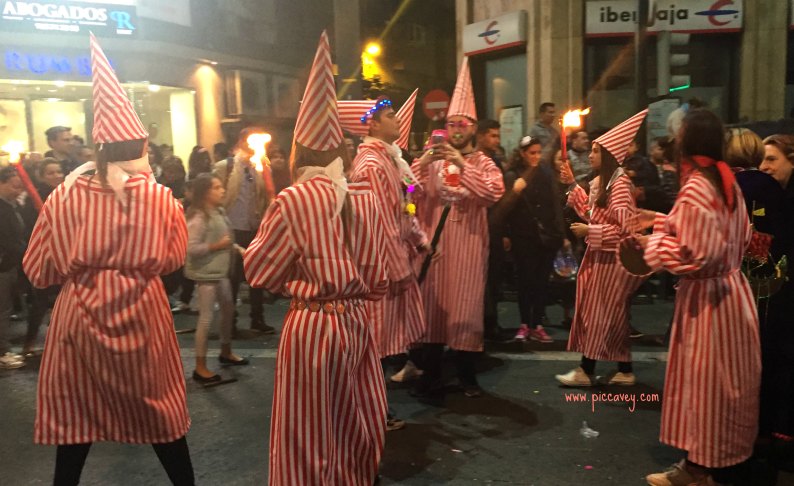
Granaderos – These soldiers in a blue uniform remind me of French troops. This has been part of the parade for a long time. Surprisingly instead of having cannonballs or grenades they have oversize cutlery to eat the sardine. These large knives and forks prod the crowd as they go by in the procession.
Conte´s Dragon – The most well known attraction is Conte´s Dragon. Made by González Conte, a local artist known for his excellent papier mache and modelling work. This vintage Dragon model is the symbol of this parade. The Dragons mouth has fireworks making it look like a fire breathing dragon.
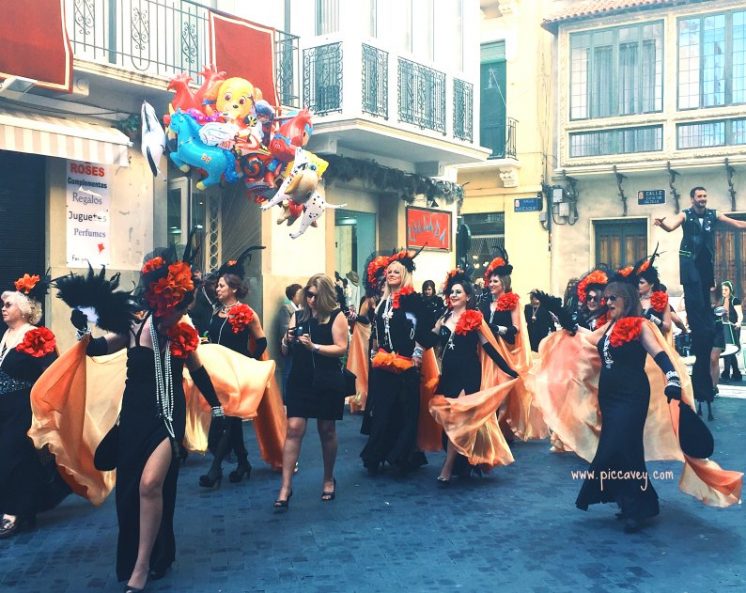
Murcia Festival
Many thanks to Daniel Robles and the whole of the Entierro de la Sardina organisation for their invitation and warm welcome.
To The Mayor of Murcia who I must congratulate on his excellent English and to the Murcia Ayuntamiento who welcomed us into the Town Hall that weekend.
To Hotel Conde de FloridaBlanca where I stayed during my time in Murcia
and to María José Nicolás for her coordination and hosting over the weekend.
Please Note:
This post contains affiliate links, which means that if you click through and make a purchase, I will receive a small commission. All thoughts, feelings and opinions shared on this blog and in this post are my own.
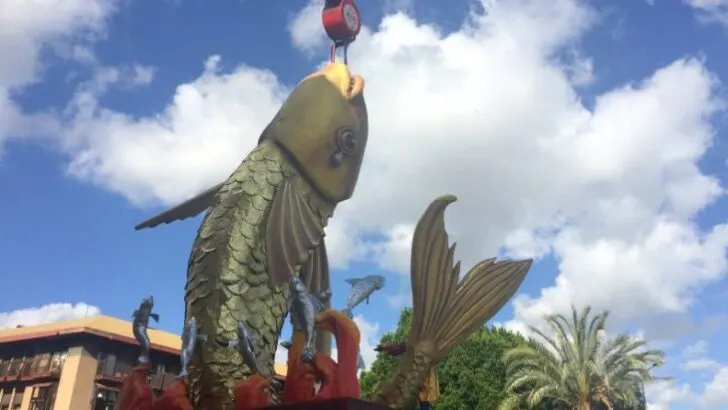
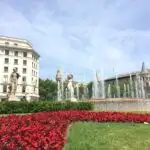
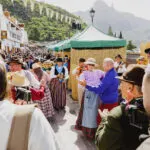
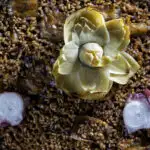

This one caught me out. I drove into Murcia city one day and parked up in one of the underground car parks. Imagine my surprise when I got out of the car and saw lots of young women stripping down to their underwear! Later I found out they were getting changed into costumes as part of the precession but my first thought was that Murcia certainly had my vote as one of the most agreeable cities I have ever visited.
It is such a fun time to be in Murcia
The food is also wonderful in that region too
I have been curious about Murcia as a city to explore. Looking for a medium-sized, traditional, Andalusian university town like Granada but closer to the sea. Do you think Murcia would fit the bill?
Granada has the Costa Tropical. Just 30 mins drive on the motorway to beaches with not a lot of tourists. (Many Spanish Nationals)
Murcia is a sweet town but doesnt have such a vibe as other places like Cordoba, Malaga, etc.
Until you have lived in Spain (renting) more than 8 months or so, yu cannot possible decide on which location suits your lifestyle. One thing is a holiday or break, another thing is actual day to day life.
Do Air BNB or similar, mid term rental in a few locations and that will really make it clear.
Hope this helps.
This looks like such a fun celebration! I am in love with the costumes of the people in the parade!
Yes, it was so loud and colourful. Great fun